
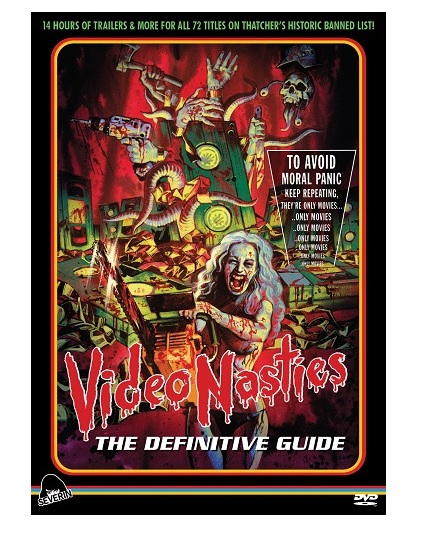 Doctor Karen Oughton here with part one of a two part interview/review series about Severin Film’s VIDEO NASTIES: THE DEFINITIVE GUIDE Parts 1 & 2. Following the festival-circuit success of their documentary, VIDEO NASTIES: THE DEFINITIVE GUIDE, director Jake West and producer Marc Morris gave me the first of two interviews discussing censorship, sensationalism and story in horror cinema.
Doctor Karen Oughton here with part one of a two part interview/review series about Severin Film’s VIDEO NASTIES: THE DEFINITIVE GUIDE Parts 1 & 2. Following the festival-circuit success of their documentary, VIDEO NASTIES: THE DEFINITIVE GUIDE, director Jake West and producer Marc Morris gave me the first of two interviews discussing censorship, sensationalism and story in horror cinema.DR KAREN OUGHTON (DO): Is there anything that you think shouldn’t be filmed or should be censored?
MARC MORRIS (MM): Anything that’s real, obviously – like, real murders or real animal cruelty…
JAKE WEST (JW): I don’t think so…
MM: Because that’s a crime, but it if it’s written or done to a script with actors... But how far do you go?
JW: I don’t know. That’s the question. It’s whether you are talking about something that is real or for entertainment. I think there’s a… there’s a big difference. Personally I don’t think… if, like, you were trying to create a genuine snuff movie, then I don’t think you should film. But then I don’t think the person should be murdering the other person in the first place. You see what I mean? But the idea of wanting to create that as entertainment for somebody, I would find that disturbing.
MM: Have you heard of this “Three Men and a Hammer” that’s just showed up on the Internet? This particular extreme footage is three guys who kidnap this guy and kill him with a hammer. They’re just hitting him with a hammer.
JW: Is that real?
MM: It’s real, yeah. I couldn’t watch it, it’s horrible.
JW: If that’s real, surely… they should be arrested! *Visibly shocked*
MM: They have been. But you know, it just shows what’s being done now – it’s horrible.
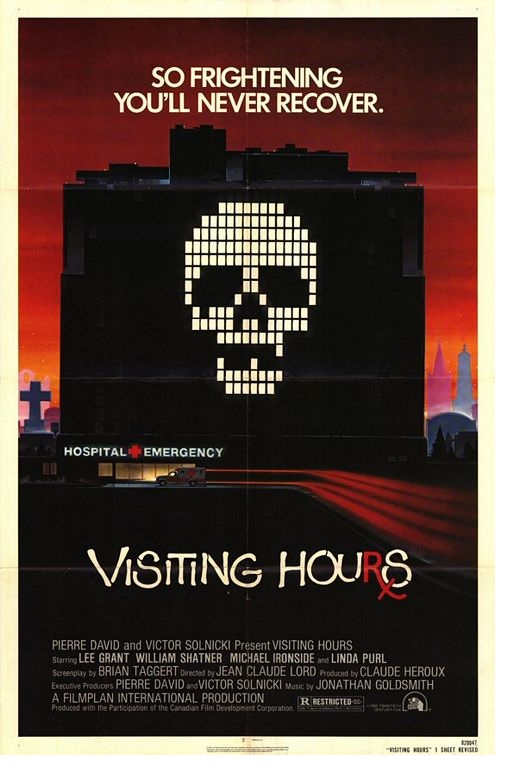 JW: But yeah, there’s a big difference between trying to film some horror and real life – oh, and trying to tell a story. And I think that as a film maker your job is to tell a story. Now whether people are comfortable with the story that you’re telling depends on their own limits. A SERBIAN FILM is probably a good example of this. Clearly it goes against a lot of people’s limits to take that film. But I don’t think it’s right for anyone to say that as film makers they can’t film their story.
JW: But yeah, there’s a big difference between trying to film some horror and real life – oh, and trying to tell a story. And I think that as a film maker your job is to tell a story. Now whether people are comfortable with the story that you’re telling depends on their own limits. A SERBIAN FILM is probably a good example of this. Clearly it goes against a lot of people’s limits to take that film. But I don’t think it’s right for anyone to say that as film makers they can’t film their story.It’s more of a moral judgement where we’re in a country where we’ve still got quite strong censorship, certainly in regards in areas like sexual violence. The BBFC (The British Board of Film Classification) – have their rules and, and they see these things as trigger images and whatever. In today’s world it just seems a bit… who are they trying to protect?
MM: Hey, you can go online and order DVDs from around the world. You can get anything you want. The fact the BBFC ban or cut something highlights to horror fans that it’s something they want to see.
JW: If anything they’re more likely…
MM: If anything is on the BBFC website cut by a minute they’ll go, “Okay, what’s in that minute?”, and they’ll order the uncut version…
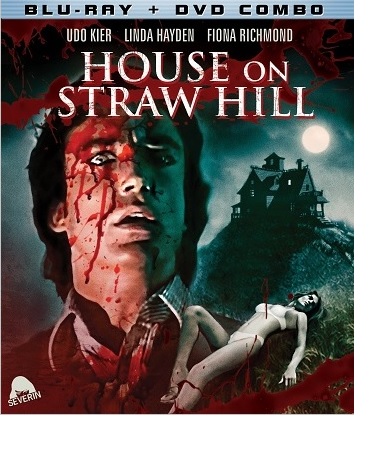 JW: They’re actually more likely to get people who… who would find the material, like, exciting in someway they shouldn’t by the mere fact that they ban it and draw attention to it. It’s always that case. Like, the man on the street is not going to hear about A SERBIAN FILM it until tabloids like The Sun start moaning about it. There’s no way he’s going to go to a film festival to watch it and it’s not going to have a general release… you know? It’s not that kind of movie. Censorship’s a difficult question.
JW: They’re actually more likely to get people who… who would find the material, like, exciting in someway they shouldn’t by the mere fact that they ban it and draw attention to it. It’s always that case. Like, the man on the street is not going to hear about A SERBIAN FILM it until tabloids like The Sun start moaning about it. There’s no way he’s going to go to a film festival to watch it and it’s not going to have a general release… you know? It’s not that kind of movie. Censorship’s a difficult question.Transgressive cinema at the very far end is always going to upset people. Of course it is. But they’ll be upset in the same way that they’re actually going to be upset by probably a normal horror film as well.
MM: They’d be upset if they picked up the latest blockbuster book that they didn’t like.
JW: But I think generally audiences are capable of taking a lot more than they would have been like, say, in the ‘80s. You wouldn’t get the same furore about violence now because things have changed. But the BBFC generally have a lot more problems with anything with sexual violence and connotations of that because…
MM: Well, they’ve got to be careful, though…
JW: Representations of sex...
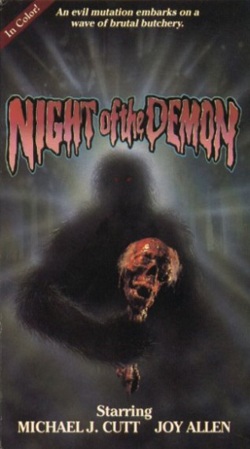 MM: They’ve got to apply the Criminal Justice Act and all these other English laws when they’re viewing this work. That’s their problem.
MM: They’ve got to apply the Criminal Justice Act and all these other English laws when they’re viewing this work. That’s their problem.JW: But the problem is that they often play it safe, though.
MM: They do play safe.
JW: They’ll see there’s something difficult in a film and often they’ll cut it a bit for the fear that, under their code, somebody might complain. They don’t actually have to cut it.
So I think you should be able to film anything as long as it’s part of a story - fiction and a narrative. Otherwise it’s news footage or something.
MM: Yes, Kim [Newman] goes into this on the documentary. He talks about martyrdom videos and how this has sort of taken over as the new extreme. At the end of the day, films are entertaining. Is watching something like that entertainment? It’s just horrible.
DO: It depends on why you want to watch the films. I prefer films that make me feel uncomfortable because I want to understand that.
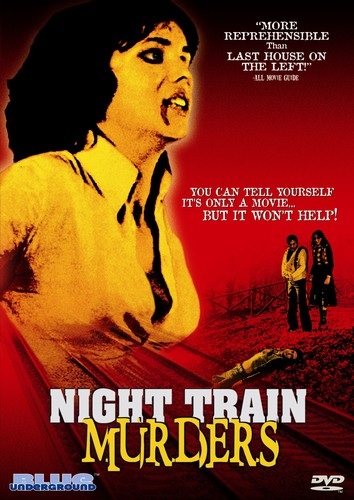 JW: Oh yes, definitely, but also I think you’ve got to ask yourself what period of life are you in. If, for instance, you’re 14 years old and you’re watching something fairly extreme and you’ve never seen anything like it, it’s a rite of passage and it will hit you with a different force than it would if you’re.... There is a thing about your experience as a viewer and your personality. There have been a lot of studies on that. You know?
JW: Oh yes, definitely, but also I think you’ve got to ask yourself what period of life are you in. If, for instance, you’re 14 years old and you’re watching something fairly extreme and you’ve never seen anything like it, it’s a rite of passage and it will hit you with a different force than it would if you’re.... There is a thing about your experience as a viewer and your personality. There have been a lot of studies on that. You know?I SPIT ON YOUR GRAVE is a good example. Martin [Barker] put it very well. People find it very difficult with films that put you (as an audience) in a situation of misogyny – where you actually have to question your own views because you feel complicit in some way. And that’s why you feel dirty sometimes after watching a film like I SPIT ON YOUR GRAVE…
MM: Like you need to have a shower after watching.
JW: Some people… can’t even get past the idea that it’s indefensible from a feminist point of view. But I always find that odd because I’ve spoken to women – people who’ve studied the film – and they think that there is a reading of that, but that it is also an exploitative film and that you’ve got to balance the idea that it wasn’t made as a complete out-and-out statement against rape. There is a tension between those perspectives and you’ve got to understand that as a viewer.
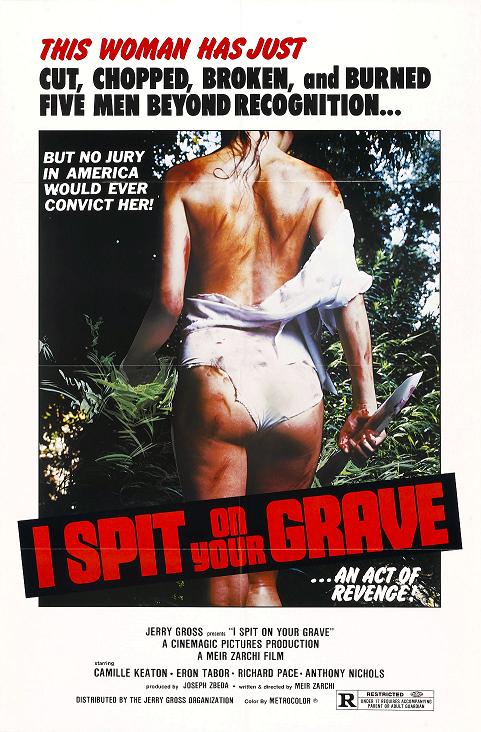 And you would need to understand about film history and marketing and all these other things as well, you know? And I suppose that if you’re watching a rape film and you get the feeling that the audience are pro-rape it would be quite disturbing.
And you would need to understand about film history and marketing and all these other things as well, you know? And I suppose that if you’re watching a rape film and you get the feeling that the audience are pro-rape it would be quite disturbing.MM: Actually, I can imagine the I SPIT screenings back at the grind house cinemas in the ‘70s in the US drive-ins…
JW: And certainly to women in that situation…
MM: That must have been quite worrying…
JW: I suppose maybe you would have felt quite threatened, but perhaps you would probably feel quite threatened by those kind of people regardless, because some people are just unreasonable and I don’t think the film made them like that. I think they were already like that…
But the good thing about something like I SPIT ON YOUR GRAVE is ultimately the attackers do get their bollocks cut off in the second half. It shows that they’re the idiots in the film.
MM: If the audience sympathises with the idiot rapists then they have a problem.
JW: Jennifer’s the only person who has content – she’s a novelist, she got a life. Those guys, they have nothing. They’re the most base kind of hillbilly idiots. They’re…
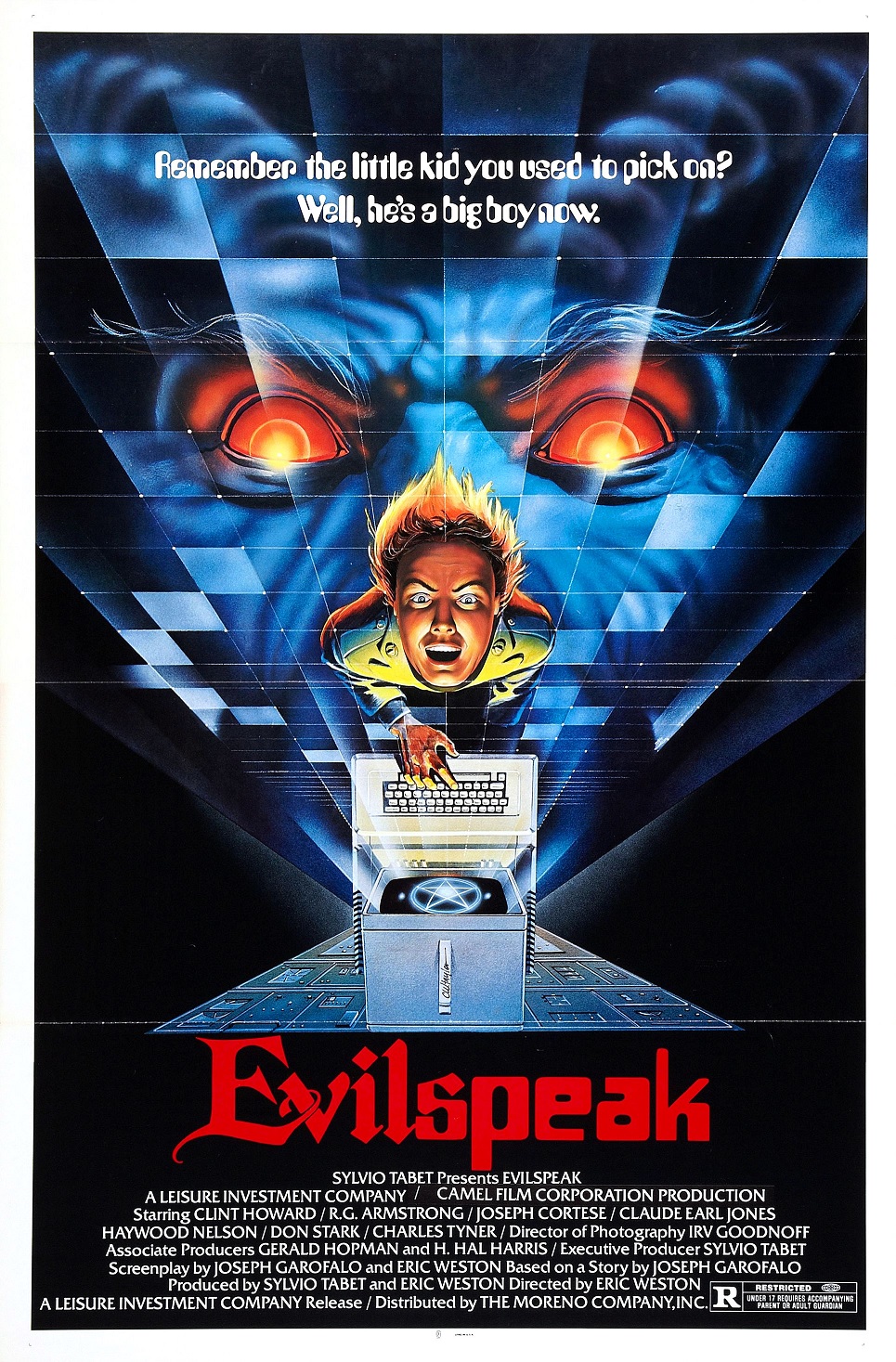 MM: We know a few blokes like that don’t we, he he! *Laughs*.
MM: We know a few blokes like that don’t we, he he! *Laughs*.JW: Not really, no!
MM: No, no!
JW: No – you might but… *All laugh*. You’ve got a really pretty mouth on you, there, boy! *Spoken in a dodgy ‘redneck’ accent*
MM: That’s what I mean – he knows one.
JW: Hey boy!
MM: Hey boy!
JW: Hey boy! *All laugh*.
JW: You see what I’m saying. I don’t think you can blame cinema for peoples’ behaviour.
MM: When the police go around criminals’ houses they always expect to find a load of horror films and they don’t. Sometimes it’s Disney films.
JW: It’s like a lot of those early Disney cartoons as well. They had problems didn’t they?
MM: Yeah, what was it, FANTASIA? They changed the characters around. It was political correctness wasn’t it?
JW: That was one of those interesting things where you can see how things change over time. I now think society is in a situation where the general feeling is that we are too PC [politically correct]. We are PC to the point of idiocy. People who are PC get offended by everything - like, “Oh you can’t say that, you can’t do that”. I think we might be leading back into this over-protection idea. You can’t even seem to make a joke now without someone wanting to sue you because they get very offended and too sensitive because we’re in a country where we’ve had this kind of nannying. We’re not sure whether they can laugh or…
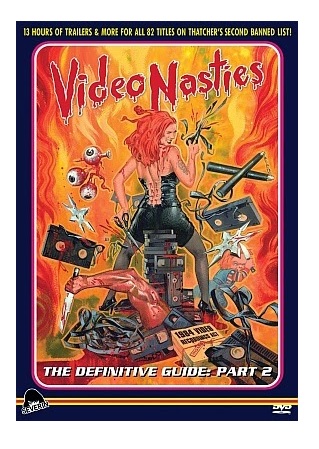 DO: There was a case at the Crown Court this year concerning extreme porn – bestiality. Do you remember Tony the Tiger?
DO: There was a case at the Crown Court this year concerning extreme porn – bestiality. Do you remember Tony the Tiger?JW: Tony the Tiger – from Frosties [breakfast cereal]?
DO: Yes. The one who said “They’re grrrrreat!” An image resembling the character was said to be the star of a porn film. It took until they got the video into the Court for someone to turn the sound up and hear that the cartoon tiger say that performing for the video “beat” doing the adverts. It was a joke!
MM: I’ve never heard about that.
JW: You’re going to go and search it now, aren’t you?
MM: Ohhhh, Tony the Tiger!! Bestiality porn, lovely!!
DO: It’s the show aspect – remember the way he used to say, “They’re grrrreat!”
JW: “They’re grrreat”... That’s hilarious! But once again I am amazed that someone would even take that seriously, it’s just so… grow up!
DO: See part 2 of the interview to find out Jake and Marc think about monstrosity and otherness in horror and the outer limits of extreme cinema world wide. Below is my review of VIDEO NASTIES: THE DEFINITIVE GUIDE Part 1!
 Available on DVD from Severin Films!
Available on DVD from Severin Films!VIDEO NASTIES: THE DEFINITIVE GUIDE (2010)
Directed by Jake WestReviewed by Dr Karen Oughton @DrKarenOughton
A crescendo of music plays and a man with graying hair drops his head towards his chest, exhausted by struggle. He is Professor Martin Barker and in the 1980s he campaigned against video censorship in England. He is one of the leading figures in Nucleus Films’ documentary, VIDEO NASTIES: THE DEFINITIVE GUIDE, which is available as a bundle with the newly US-released follow-up, VIDEO NASTIES: THE DEFINITIVE GUIDE Part 2. This first part includes many of the key players at the time and has a fantastically cheeky and, it has to be said, slightly naughty entertainment value. The three disc set also contains trailers with specially filmed introductions to the movies implicated in the outrage.
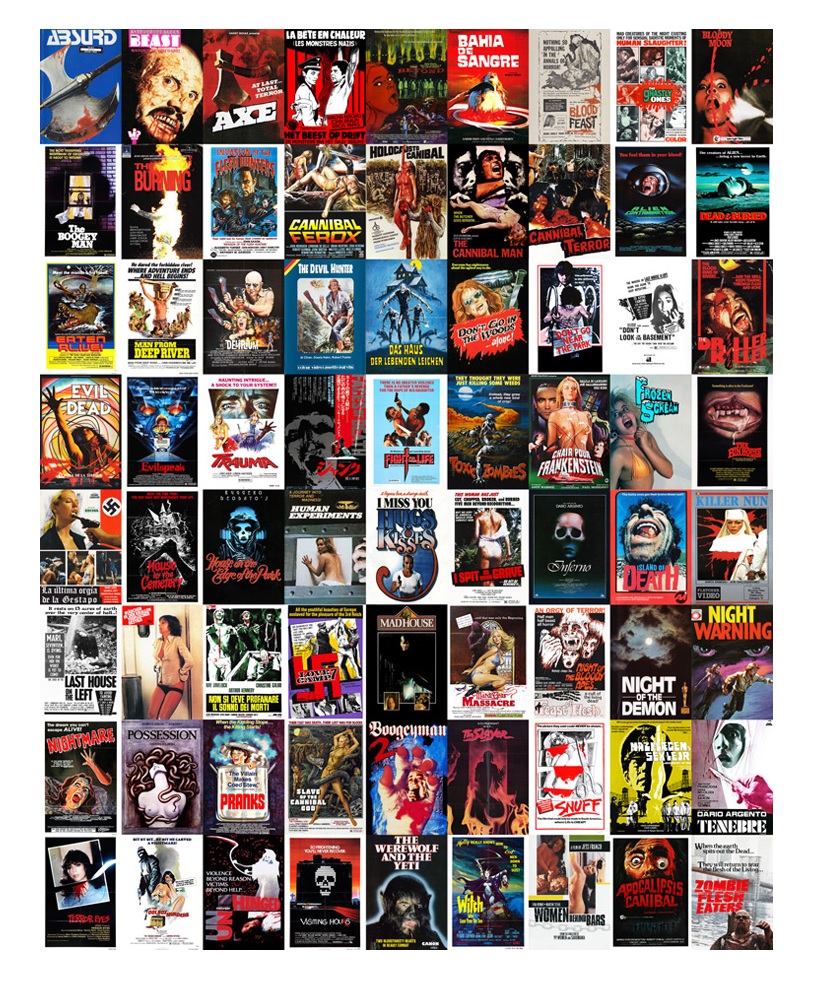 Jake West (RAZOR BLADE SMILE, DOGHOUSE) and Marc Morris are industry stalwarts and Marc in particular was one of fans caught up in the frenzy when the panic first hit the front pages, crawled into mainstream consciousness and got the politicians’ knickers in a right old twist. West and Morris know their stuff. Those interviewed for the documentary include everyone from academics who studied the titles (and the trash talked about them) through to those who fought for and against censorship in the legal and political spheres. There is also a varied roster of the supposedly reprobate stars of horror culture who reveal how the films influenced their lives so heavily. As a result of this, the documentary has a feel of the passionate emotions and sometimes sheer damn anger caused by the events that took place. Indeed, it features a blow-by-blow account of what happened as specific cases progressed through the courts. This must be seen to be believed and, yes, the infamous clip of the Member of Parliament who felt the videos could be dangerous to dogs is here, present, correct and in full. The truths here are so much stranger than fiction that the film’s occasional rhetorical flourishes, such as tolling bells in the background, are fun though the information speaks for itself.
Jake West (RAZOR BLADE SMILE, DOGHOUSE) and Marc Morris are industry stalwarts and Marc in particular was one of fans caught up in the frenzy when the panic first hit the front pages, crawled into mainstream consciousness and got the politicians’ knickers in a right old twist. West and Morris know their stuff. Those interviewed for the documentary include everyone from academics who studied the titles (and the trash talked about them) through to those who fought for and against censorship in the legal and political spheres. There is also a varied roster of the supposedly reprobate stars of horror culture who reveal how the films influenced their lives so heavily. As a result of this, the documentary has a feel of the passionate emotions and sometimes sheer damn anger caused by the events that took place. Indeed, it features a blow-by-blow account of what happened as specific cases progressed through the courts. This must be seen to be believed and, yes, the infamous clip of the Member of Parliament who felt the videos could be dangerous to dogs is here, present, correct and in full. The truths here are so much stranger than fiction that the film’s occasional rhetorical flourishes, such as tolling bells in the background, are fun though the information speaks for itself. 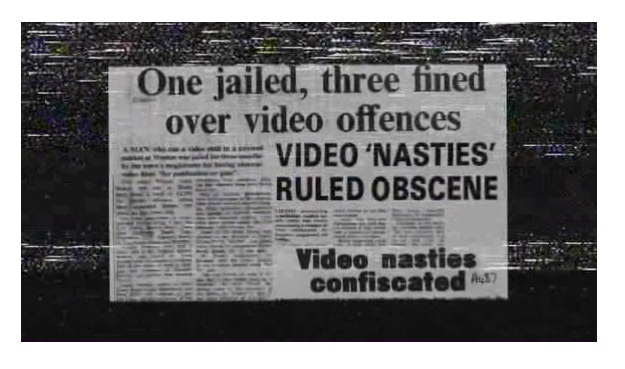 The Nucleus boys are mega fans and this set has the market’s desires very much in mind. Legendary English horror beauty Emily Booth introduces a number of segments, playing saucily to the screen while she licks her implements and cackles over cassette cases. What’s more, you get to play snap between the screen and your own collection as images from each movie and its case’s cover art flash up with varying degrees of gore, ghastliness and good old gratuitousness (I’m sure a lot of us still have some of the actual evidence rather than digital derivatives).
The Nucleus boys are mega fans and this set has the market’s desires very much in mind. Legendary English horror beauty Emily Booth introduces a number of segments, playing saucily to the screen while she licks her implements and cackles over cassette cases. What’s more, you get to play snap between the screen and your own collection as images from each movie and its case’s cover art flash up with varying degrees of gore, ghastliness and good old gratuitousness (I’m sure a lot of us still have some of the actual evidence rather than digital derivatives).VIDEO NASTIES: THE DEFINITIVE GUIDE is very much a celebration of the horror community as well as the films that faced the furor. While it does have its biases, it deftly deconstructs the arguments against censorship in a way that also highlights the strangeness of the situations that caused the panic in the first place. It’s vital viewing for anyone interested in censorship or who simply loves sick cinema.
Look for our bi-weekly rambling about random horror films on Poptards and Ain’t It Cool on AICN HORROR’s CANNIBAL HORRORCAST Podcast every other Thursday!
